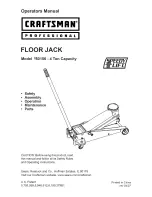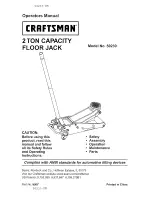
15
Fig. 4.1
cold lead
temperature
sensor
10'
8'
We can help optimize your work plan. Fax it to us at 724-662-3957. Clearly
indicate all dimensions. A minimum of one horizontal and one vertical
dimensions are necessary to validate the scale.
4.2 Preparing the Subfloor
• Clean and remove any debris, dust or protruding objects that could damage the
heating cable. The surface must be clean and dry for the adhesive mat to adhere
perfectly to the subfloor;
• Subfloor cracks must be filled with polyester wood filler;
• The subfloor must be solidly fastened in place to prevent movement;
• The application of a floor levelling product is recommended to prevent future
damage to the ceramic caused by subfloor movement;
• For concrete subfloors, apply a surface sealer that is compatible with electrical
heating systems in accordance with the cement glue manufacturer’s instructions.
Completely coat the surface;
• Let dry before installing the EFMA system (refer to the sealer’s instructions for
drying time).
4.3 Marking the Floor
Felt marker
• On the floor of an empty room (under construction or major renovations), draw the
location of stationary elements (toilet, bath, shower, counters, drawers, permanent
furnishings) that will be installed later. These marks will outline the heating area to
ensure the EFMA system is not placed under these stationary elements (Fig. 4.3 a);
• Draw lines on the floor the width of the mat 0.41 m (16”) or 0.82 m (32”);
• Indicate in which direction the EFMA system will be unrolled;













































